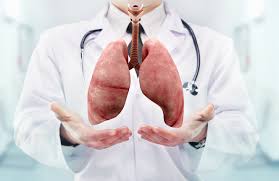
COPD Management: Recognizing Triggers and Preventing Flare-Ups
Chronic Obstructive Pulmonary Disease (COPD) is a prevalent and progressive respiratory condition that impacts millions worldwide. Characterized by persistent airflow limitation, it encompasses conditions such as chronic bronchitis and emphysema, posing significant challenges to those affected. In this discussion, we delve into the complexities of this condition, addressing common misconceptions and shedding light on essential aspects of COPD causes, symptoms, and management. Join us as we navigate through the intricacies of Chronic Obstructive Pulmonary Disease, aiming to enhance understanding and foster effective strategies for individuals living with this chronic respiratory ailment.

Chronic obstructive pulmonary disease is a common respiratory condition that affects millions of people worldwide. Despite being a well-known condition, there are still many myths surrounding the condition that can lead to misunderstandings and misdiagnosis.
Myth 1: COPD only affects smokers
While smoking is the leading cause of this disease, it is not the only cause. Exposure to air pollution, secondhand smoke, and workplace dust and chemicals can also lead to the development of Chronic Obstructive Pulmonary Disease. In rare cases, genetic factors can also play a role. It is important to note that not all smokers develop COPD, and not all people with this disease are smokers.
Myth 2: Chronic Obstructive Pulmonary Disease is a normal part of aging
It is not a normal part of aging. While it is true that the risk of developing the disease increases with age, it is not an inevitable consequence of getting older. In fact, many people are diagnosed in their 40s or 50s. Early diagnosis and treatment can help slow the progression of the disease and improve quality of life.
Myth 3: Exercise is bad for people with Chronic Obstructive Pulmonary Disease
Exercise is actually beneficial for affected persons. Regular exercise can improve lung function, increase endurance, and reduce shortness of breath. It is important to start slowly and gradually increase the intensity and duration of exercise over time. A healthcare provider can help develop an exercise plan that is safe and effective for these individuals.
Myth 4: There is no treatment for the disease
While there is no cure for COPD, there are treatments available that can help manage symptoms and slow the progression of the disease. Medications, such as bronchodilators and corticosteroids, can help open up the airways and reduce inflammation. Oxygen therapy may also be necessary for people with severe cases. Pulmonary rehabilitation, which includes exercise, breathing techniques, and education, can also improve quality of life for those affected.
In conclusion, there are many myths surrounding Chronic Obstructive Pulmonary Disease that can lead to misunderstandings and misdiagnosis. It is important to understand the facts in order to properly manage the condition. Remember that anyone can be affected, not just smokers, and that early diagnosis and treatment can make a big difference in quality of life. Exercise is beneficial for people with COPD, and there are treatments available that can help manage symptoms and slow the progression of the disease.
Disclaimer: The information provided in this content is for general informational purposes only. It is not intended as medical or healthcare advice, diagnosis, or treatment. Always seek the advice of a qualified healthcare professional with any questions you may have regarding a medical condition or healthcare decisions.

